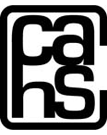CLINICAL LABS: IMPORTANCE TO THE CONSUMER
This follow–up issue of Health Perspectives on hospital reimbursement (V. 2 # 5) now applied the same questions and similar findings to clinical labs; describing those located and operated within hospitals, in medical doctors’ offices and independent, for-profit labs. It also raised the relationship of cost and quality and raised questions about the need for the billions of tests ordered each year. One aspect mentioned was the practice of many labs practicing what is called ‘drain board’ tests. This practice means that samples sent to labs for analysis were routinely discarded without any analysis; yet, made-up results were returned to the sender!
While this practice is upsetting because medical doctors and patients depended on accurate test results to make diagnostic and treatment decisions, the other and as equally horrible finding was that even when the tests were performed the test results had error rates reaching 50% at many labs.
At the point of publication more tests were being ordered as subtle changes in medical education and residency training leaned to making a diagnosis based not on spending time with patients to obtain a detailed and verifiable medical and chief complaint history but on tests of questionable accuracy. In lieu of face time with patients the increasing mythology and dependence on new technology and tests brought about a potential profit market in performing tests. While drain board activity increased, the state agencies mandated by law to oversee and regulate labs were faltering. When they did do their job they consistently found error rates that boggle the mind.
The incentive to dump samples submitted for testing and to rush the tests which produced high error rates was the profit to be made. As long as Medicare, Medicaid and private insurers paid for tests without questions about need, quality or cost there was no incentive to make any changes. At many teaching hospitals the resident doctors were encouraged to order tests so they could learn. Their education was totally supported by hospital reimbursement including the ordering of unneeded tests. The public paid and the public remained in the dark.
This issue attempted to part the curtains by describing the history of clinical labs, the escalating number of tests, the board draining and error realities, the impact on quality and expense. A summary on page 4 identified aspects of regulation by state and a table on page 5 exposed the number of labs with deficiencies based on annual inspections. The issue mentions the fight of lab owners against any cost controls and the wide variation in charges, the duplicity of ordered tests and the lack of effective planning to control the number of labs.
On page 8 CCAHS’ listed 13 recommendations.
